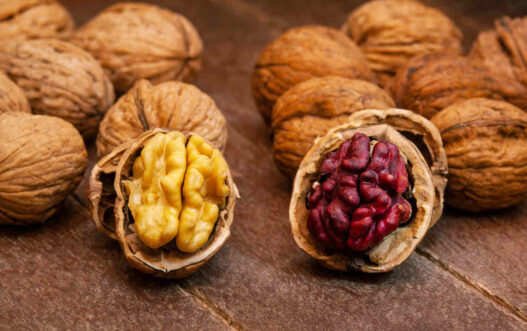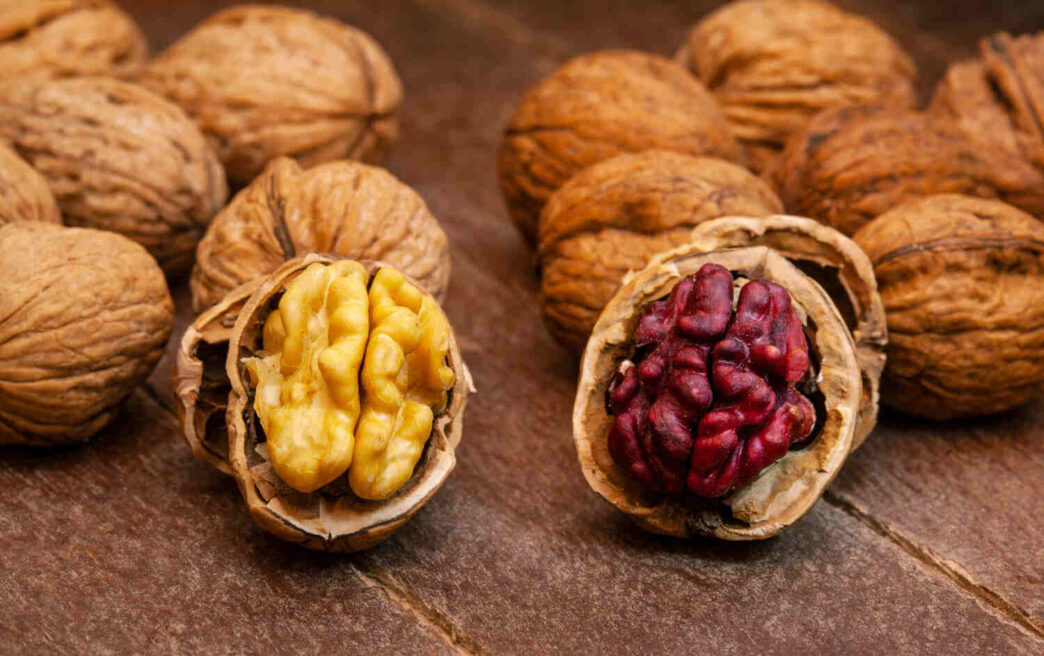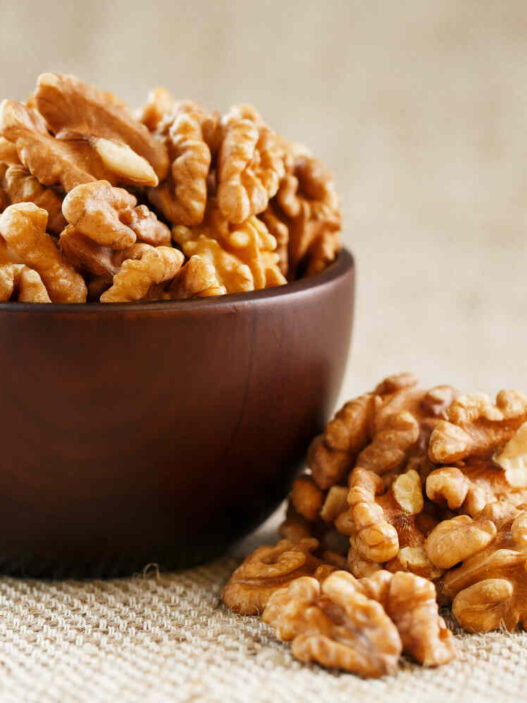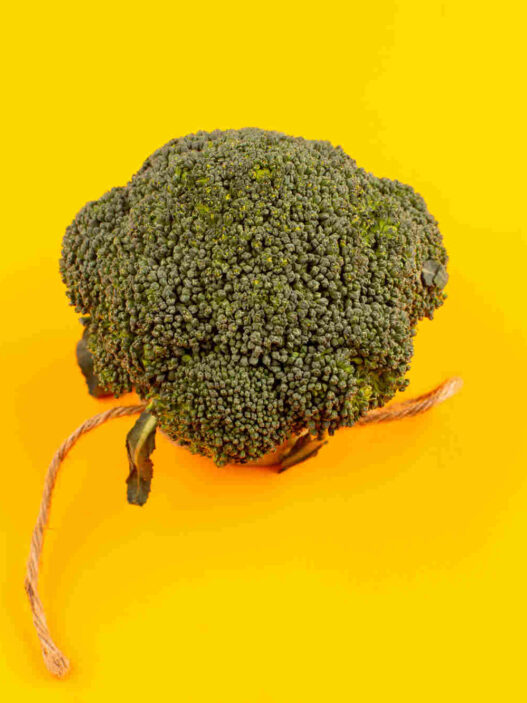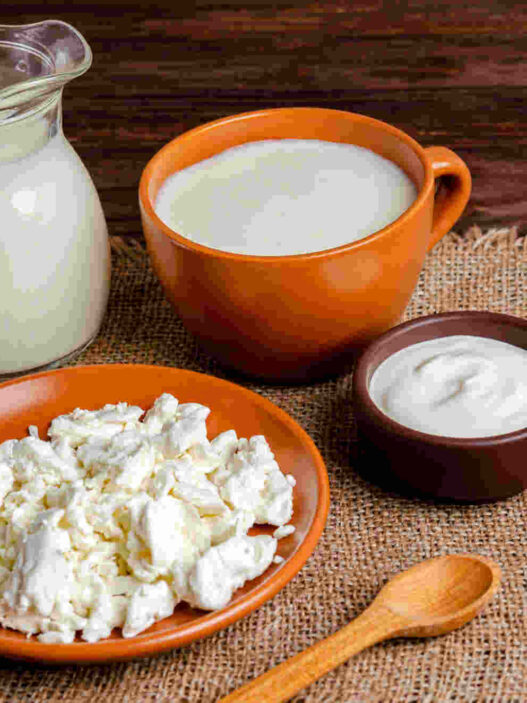There are so many walnut varieties that we have heard of. But do we know which walnut varieties are the best for our health? Well, if you are confused about which walnut varieties you should eat then this post is for you. English walnut vs black walnut, Persian walnut, or California walnut – check the nutrition facts and make a wise choice. Also, know how to get maximum nutrition by soaking your walnut.
The English walnut (Juglans regia) originated from Iran (Persia) and it was previously known as the Persian walnut. Later, when the Persian walnut was circulated by English people all over the world, people started calling it an ‘English Walnut’ or simply ‘Walnut’ or even ‘California Walnut’ or ‘Mission Walnut’. This is because California accounts for 90% of its production (1). English walnut (Persian Walnut) is used for nutrition and medicinal purposes and is grown in Europe, Asia, and eastern and southern parts of the US (2). English Walnut contains the highest amount of phenolic and antioxidant compounds among all walnut varieties.
Black walnut is the one that originated in North America. It has also an excellent nutrient profile. However, there is a variety that was grown in California and known as ‘California Black Walnuts’ (Juglans nigra). So, California black walnut is actually black walnut while the California walnut is the Persian Walnut that later changed to English Walnut. Isn’t that confusing? So, we basically have two major walnut varieties – the English Walnut and the black walnut.
Now that we know what is Persian walnut and California walnut, let us compare English walnut vs black walnut varieties! An article published in the International Journal of Food Properties compared English Walnut with Black Walnut and concluded that based on phytochemical composition, black walnut despite being potent has not received the requisite attention it deserves, and hence more scientific studies are required on black walnut (1).
English Walnut vs Black Walnut Varieties – Origin, Size, Shell, Flavor
English Walnut |
Black Walnut | |
|
Origin |
Persia |
North America |
|
Common variety |
Yes |
Not as common as English Walnut |
|
Size of Nut |
Large size |
Smaller size |
|
Shell |
Thin shell so higher commercial value |
Hard thick shell so lower commercial value |
|
Flavor |
Mild sweet flavor |
Fruity aroma, bold unique flavor |
English Walnut vs Black Walnut – Composition of Walnut Varieties
As per the comparison in the composition of English walnut vs black walnut varieties, the walnut nutrient composition (USDA) is as under (1, 3) –
English vs Black Walnut General Nutrient Composition of Walnut Varieties
English Walnut(Value per 100g) |
Black Walnut(Value per 100g) | |
|
Total Fat/ Lipids (g) |
65 |
59 |
|
Saturated fatty acids (g) |
6.1 |
3.3 |
|
MUFA (g) |
8.9 |
15 |
|
Oleic acid (g) (MUFA) |
8.7 |
14.5 |
|
PUFA (g) |
47 |
35 |
|
Linoleic acid (g) (LA) (PUFA) |
38 |
33 |
|
α linoleic acid (g) (ALA) (PUFA) |
9 |
2 |
|
Carbohydrate (g) |
13.7 |
9.9 |
|
Protein (g) |
15.2 |
24 |
|
Sugars (g) |
2.6 |
1.1 |
|
Fiber (g) |
6.7 |
6.8 |
|
Plant Sterols (Phytosterols) (mg) |
72 |
109 |
While comparing the above table, we can see that the black walnut has higher protein content, lower carbs, less sugar, similar fiber, and higher oleic acid but lesser alpha-linoleic acid (ALA), an omega-3 fatty acid as compared to the English (Persian) walnut variety.
Black Walnut contains a higher amount of phytosterols, which help lower cholesterol levels.
English Walnut (Persian Walnut), on the other hand, contains higher ALA which has been linked to protection against cardiovascular diseases, lowering blood pressure, reducing platelet aggregation, reducing inflammation, and beneficial in type 2 diabetes (1).
English vs Black Walnut Comparison of Mineral Content of Walnut Varieties (1, 3)
English Walnut(Value per 100g) |
Black Walnut(Value per 100g) | |
|
Calcium |
98 mg |
61 mg |
|
Iron |
2.9 mg |
3.1 mg |
|
Magnesium |
158 mg |
201 mg |
|
Phosphorus |
346 mg |
513 mg |
|
Potassium |
441 mg |
523 mg |
|
Sodium |
2 mg |
2 mg |
|
Zinc |
3.09 mg |
3.17 mg |
When comparing walnut varieties, English Walnut or Persian Walnut contains higher calcium, but black walnut has higher iron, magnesium, phosphorus, potassium, and zinc.
English vs Black Walnut Comparison of Vitamins in Walnut Varieties (1, 3)
English Walnut(Value per 100g) |
Black Walnut(Value per 100g) | |
|
Vitamin C |
1.3 mg |
1.7 mg |
|
Thiamine |
0.3 mg |
0.05 mg |
|
Riboflavin |
0.15 mg |
0.13 mg |
|
Niacin |
1.1 mg |
0.4 mg |
|
Vitamin B6 |
0.53 mg |
0.58 mg |
|
Folate |
98 µg |
31 µg |
|
Vitamin A |
20 IU |
40 IU |
|
Vit E (Tocopherol) |
0.7 mg |
1.8 mg |
|
Vit K |
2.7 µg |
2.7 µg |
Black Walnut contains higher amounts of vitamin E, A, B6, and C. Vitamin E helps boost immunity. However, the Persian or the English Walnut variety contains higher folate levels.
English vs Black Walnut – A Comparison of Health Benefits of Walnut Varieties
As can be seen from above, both English and Black Walnut have nutrients that are beneficial for our health., However, more research studies have been carried out on the English variety.
On comparing the nutrient profile of the walnut varieties, black walnut has a better nutrient profile, however, they have not been scientifically studied as much as English walnut, and hence more studies are required to evaluate black walnut against neurological, and cardiovascular diseases.
Let us now compare the reported health benefits of both walnut varieties. While we have mentioned here some of these benefits (though variety has not been mentioned here it is assumed that most studies have generally been reported on English variety), the studies on black walnut have been limited and compared as below:
Cardiovascular diseases
Several research studies have shown a correlation between nut intake and the risk of CV diseases including walnuts. Please note that when only ‘walnuts’ are written, they usually mean the English variety of walnut. Walnuts were found to have blood pressure-lowering effects, reduced C-reactive protein, reduced lipid levels, and reduced atherosclerotic plaque formation. Studies have mainly attributed this to ALA but also other nutrients.
However, a study compared the effects of black vs English walnut varieties on heart health and reported that CVD markers, total cholesterol, and LDL cholesterol were lowered by both varieties but more by a black walnut (4). As black walnuts have lowered ALA hence ALA cannot be entirely responsible for the protective effect of walnuts on CV health.
Cancer
Walnuts possess antioxidant and anti-inflammatory properties. They have thus been studied experimentally on various types of cancers. The omega-3 fatty acids, tocopherol, and polyphenols have been responsible for the anticancer effects of walnuts. Both walnut varieties have these constituents, but black walnut has higher tocopherol. As tocopherol is linked with a lower risk of certain cancers including prostate cancer, it is expected that it might have better anticancer effects than an English walnut (4). However, there are limited studies available on black walnut.
Brain diseases
Walnuts have been reported to have protective effects against several neurodegenerative diseases. As omega-3 fatty acids are important for brain health, they might be responsible for the health benefits. However, antioxidant and anti-inflammatory effects may also contribute. Recently, evidence has indicated that black walnut kernel extracts suppress the pro-inflammatory cytokines and might be effective in inflammatory diseases (5). Studies comparing the effects of English vs black walnut varieties for beneficial effects on brain health are limited.
Antibacterial
Walnut contains gallic acid, ellagic acid, ferulic acid, and naringin which are responsible for their antibacterial effects. A comparison of the antibacterial activity of English vs black walnut varieties is not available (5).
Antidiabetic activity
Omega 3 fatty acids have beneficial effects on insulin sensitivity hence reducing the risk of type 2 diabetes. Among all oil nuts, English walnut has the highest, and black walnut has the second highest levels of ALA, omega 3 fatty acids (5). Epidemiological studies have reported higher walnut intake with lower type 2 diabetes. However, a recent meta-analysis of various clinical studies confirmed no improvement in glycemic control by walnut consumption. A comparison with black walnut is not available yet (6).
How to get maximum nutrition from Walnuts? Why Soak Walnut in Water?
Soaking walnut in water is extremely important, whatever walnut varieties you eat. The nutrients present in walnut (protein, zinc, iron, etc.) are better absorbed by the body when soaked in water. The water removes the phytic acid present in walnuts. Phytic acid is basically the outer layer of the nut that provides protection. When we consume phytic acid, it can irritate GIT and may cause indigestion and prevent absorption of nutrients. This is also the traditional way of eating nuts. However, scientific studies have not proven any benefit of soaking walnut on nutrient bioavailability. Some scientists also found that eating walnut has lower calories than claimed on the label. This is because significantly fewer calories getting absorbed by the body.
“I love my walnuts too! Some people might be susceptible to kidney stones from oxalates. And Phytic acid in the walnuts blocks 80% of all the wonderful nutrients unless you soak them. Some people also get constipation if they eat too much. So, yes, walnuts are healthy but keep in mind the antinutrients too and their side effects for some people” By John LaSpina
Conclusion
Though a final conclusion regarding the health-promoting properties of walnut varieties – Persian walnut/ California walnut / English walnut vs black walnut can only be made after more scientific studies get available on black walnut, the phytochemical composition given in this article will give you an idea as to what to expect from each variety. It is clear that both the major walnut varieties are full of nutrients.
Sources
3. USDA – Methods, and Applications of Food Composition Laboratory
4. Cardiovascular effects of consumption of black versus English walnuts – PubMed (nih.gov)
